- Home
- Deborah Blum
The Ghost Hunters Page 7
The Ghost Hunters Read online
Page 7
At the time of his invention, and of his experiments with Home, neither Crookes nor his colleagues had any understanding of the structure of the atom, or of the energy embedded in subatomic particles like the electron. But the sense of natural sources of energy, of physical explanations waiting to be found, simmered in the science community. And it was that awareness of powers yet to be discovered that William Crookes found so compelling when he raised the possibility of a “psychic force” and urged his colleagues to abandon earlier misunderstandings and join with him in the search for it.
Crookes was such a smart scientist, and his reputation still so solid, that his psychical experiments proved difficult to dismiss, even among skeptics. Despite the attacks on his competence, and even his sanity, Crookes knew he was, at least, unnerving some members of the research establishment. Even Charles Darwin, after reading Crookes’s reports, confessed himself “a much perplexed man. I cannot disbelieve Mr. Crookes’ statement, nor can I believe his result.” In genuine dismay, Darwin turned to his friend Huxley for reassurance. Huxley was quick to reply. He did not doubt that a talented conjurer—which he thought defined the mysterious Mr. Home— could fool even a talented scientist. That, he could promise Darwin, was the entire story of the Crookes reports.
Darwin replied with real relief; he disliked wobbling away from the solid ground of scientific reality. He was now content in the knowledge, Darwin told Huxley, that “an enormous weight of evidence would be requisite to make one believe in anything beyond mere trickery.”
In fact, Crookes also agreed that it would take an enormous weight of evidence to accumulate anything like belief. But his response was to advance rather than retreat. There was no one better qualified, he insisted, to dismantle the specious claims and to decipher the credible ones. He wanted researchers who believed, as he did, that “the supremacy of accuracy must be absolute.” If Darwin and Huxley demanded hard evidence, then—in Crookes’s view—unimpeachable researchers were required to cast the “worthless residuum of Spiritualism” away and reveal the promising remainder.
THE SAME YEAR that Crookes issued his call for help, John Tyndall, newly elected president of the British Association for the Advancement of Science, made it evident that no reputable researcher would follow that lead. Tyndall had been among the first to reject Alfred Russell Wallace’s claims, and he continued to believe, passionately, that there was no room in the halls of science for even the possibility of spirit phenomena, ghosts, or gods. To think otherwise would have been to betray the new worldview, a worldview defined exclusively by scientists like Tyndall himself.
Tyndall was Faraday’s successor at the Royal Institution; he had been elected to the association’s presidency in 1874. He was an extraordinarily gifted scientist—and an equally formidable personality. Over the course of his career, Tyndall showed that gases could both absorb and transfer heat (a fact that would underlie theories of global climate change a century later); he demonstrated that ozone was a cluster of three oxygen molecules (others had mistakenly thought it was made of hydrogen); and he invented breathing devices for firemen and instruments to measure air pollution—notably the smoky fogs that too often enveloped London in choking darkness. His scientific prowess, combined with his new office, made Tyndall’s a particularly persuasive voice as he evangelized for science and against any notion of a reality beyond the physical.
It was the age of scientific miracles, after all. Over the past decade alone Louis Pasteur had invented pasteurization, Alfred Nobel had invented dynamite, and Thomas Edison had invented the stock ticker. Tyndall’s peers had in a few short years advanced civilization beyond anything, in his opinion, that religion had accomplished over many centuries. The new president of the British Association found it easy to dismiss biblical teachings as the explanations of yesterday. Any concept of an afterlife he jettisoned as unwanted, unwarranted dreaming—an illusion perpetrated on “the weak mind of man.”
In his 1874 presidential address in Belfast, Tyndall urged spiritual leaders of all sorts—including the mainstream Christian clergy—to step aside:, “The impregnable position of science may be described in a few words. We claim, and we shall wrest from theology, the entire domain of cosmological theory. All schemes and systems which thus infringe upon the domain of science must, in so far as they do this, submit to its control, and relinquish all thought of controlling it.”
THE THIRD OF the founders of the psychical research movement, Edmund Gurney, was, at first, the most reluctant. Gurney possessed the outward appearance of a man lavishly blessed by life. He stood nearly six feet four inches tall, blue-eyed and fair-haired. He had an elegantly chiseled face, adorned by high cheekbones and a drooping handlebar of a mustache. He wore his top hats high and his tailored suits with style.
Born in Surrey in 1847, Gurney had inherited enough money to enable him to live in luxurious idleness—if he chose. He was as impatient with that prospect as he was with those who assumed his ambition reached no higher, among them the pretty woman who would become his wife.
He possessed “a mind as beautiful as his face,” said the British novelist George Eliot, who belonged to Gurney’s wide circle of friends. The rumor in London society was that the often-imperious Eliot had modeled the sweet-natured hero of her last novel, Daniel Deronda, after Edmund Gurney. She didn’t deny it.
He could seem almost annoyingly perfect, until one got to know him better—and found the shadows under the gloss.
Gurney met Sidgwick and Myers while studying law and philosophy at Cambridge, a career he’d chosen after giving up his dream of becoming a concert pianist. They bonded over a shared love of philosophical arguments and of poetry, especially for that reigning poet, Alfred, Lord Tennyson. Hostesses of university parties spoke of them as an inevitable threesome—quiet Sidgwick, talkative Myers, and charming Gurney.
Myers was the only one of them who really enjoyed the circuit. Sidgwick was too shy to relax at parties, and Gurney, for all his social graces, too driven. “He could not bear to live without hard work,” Myers recalled. There were reasons beyond ambition for Gurney to seek a working environment. The discipline of it seemed to steady him. All three men were intense by nature—another connection—but Gurney was unpredictably so. He had a mercurial temperament, rising to enthusiastic warmth, tumbling into chilly withdrawal, heating up again. Paralyzing bouts of depression interrupted his university career, necessitating a fifth year of study at Cambridge’s Trinity College before he achieved his bachelor’s degree. In a later century, his mood swings might have led to a diagnosis of manic-depressive personality or bipolar disorder. In the mid-nineteenth century, Edmund Gurney was simply a man given to extremes.
Despite his affection for his friends, Gurney was wary of their new direction; even at a distance, he could see how consuming it might become. So when Sidgwick first invited him to help investigate the spirit world, Gurney merely wished him luck. “Gurney will give us his warmest sympathies but no more,” Sidgwick wrote to Myers in the spring of 1874.
Even Sidgwick’s companions tended to underestimate his ability to gently and thoroughly erode resistance. Sidgwick politely acknowledged Gurney’s rejection and continued sending information on the subject, which he knew his friend was too well mannered to ignore. Within weeks, Gurney’s desk was stacked with a pile of well-selected, recently published arguments. They included Crookes’s detailed accounting of his D. D. Home experiments and yet another plea from Alfred Russel Wallace for his fellow scientists to investigate “those grand mysterious phenomena of the mind, the investigation of which can alone conduct us to a knowledge of what we really are.”
When Myers next visited him, in the seductive days of a late golden fall, Gurney had changed his mind. Sometimes Myers worried, in retrospect, that he had bullied his gentler friend into joining this improbable crusade. But in that, he was mistaken. Gurney had awakened to the cause.
Two years earlier, Gurney had lost three younger sisters, drowned in a boating accident on the N
ile River. The event had stirred a kind of inner rebellion. He was an educated man; he understood and even appreciated the arguments for a purely mechanical universe. Life lived as a cog in a cold, godless, indifferent machine, however, had come to seem to him unbearable.
As he would write to William James some years later, the “mystery of the Universe and the indefensibility of human suffering” were never far from Gurney’s thoughts. He had no idea if scientists were wrong in their precise definitions of life’s finite limits. But reading Wallace’s arguments, poring over Crookes’s deliberate experiments; Gurney realized that he wanted a chance to find out.
The three partners conducted their first serious investigation in early 1875, looking into claims that a pair of young mediums—teenage girls from Newcastle—could outdo D. D. Home in terms of materializations, summoning misty ghost children to appear from their cabinet.
As the investigators discovered, the Newcastle mediums and their regular audience of enthusiastic spiritualists clung to a certain routine. The mediums would retire to their cabinet, a curtained-off corner of a room, and allow their hands and feet to be tied while they reclined on couches. After the girls were settled, sitters would gather outside the cabinet. The mediums demanded a dark seance, with almost no illumination. The investigators sat in a dusky gloom with the gaslights turned down to a pale, blue glow. Myers complained that the gloom was so dense that he could barely see the curtains a few feet away.
And the Newcastle spiritualists insisted on singing. They began each seance with hymns, continuing for hours, whether or not a spirit arose out of the dusky murk of the room. Sidgwick finally begged them to allow him to quote poetry instead. It took two hours of Swinburne, beginning with the poet’s “Atalanta in Calydon”—“Love that endures for a breath, Night, the shadow of life, And Life, the shadow of death”—before a pair of gauze-draped children drifted out of the cabinet. Sidgwick was capable of more—he had once recited poetry through an entire crossing of the English Channel—but when he next returned the spiritualists intercepted him, breaking into song as he entered the room, loud enough to drown out any recitation.
Meanwhile, the pretty little girl ghosts tended to gravitate admiringly toward the handsome Gurney. One evening, according to Myers’s notes, a veiled spirit kissed Gurney two or three times and then, apparently feeling this inadequate, paused to “materialize her lips,” peeled back the veil, and delivered another kiss with uncovered lips. Although Gurney reported the kiss as a solid smack, the spiritualists contradicted him, insisting that the affectionate ghost was no more than empty air under her veil. Obviously, there was no way to conduct an objective study while surrounded by enthusiasts. Myers, Sidgwick, and Gurney decided to evaluate the mediums on neutral territory and moved the whole investigation to London.
They met at the home of a new member of their group, Arthur Balfour, a wealthy aristocrat—and future British prime minister—who lived in the elegant neighborhood of Carleton Gardens. Balfour set aside a small room for the spirit cabinet and kept the door locked. When in the room, the mediums were confined by a harness of leather straps and combination locks to the wrought iron surround of a fireplace. They were allowed a drawn curtain to provide the closed “energy” of a cabinet.
The investigators neither sang nor quoted poetry. It had occurred to Sidgwick that those long, tedious hours of singing allowed the girls, especially if they had a confederate, to slip, or break and replace, any ties. Meanwhile, the noisy harmonies would have masked such deception.
So in London, the investigators just waited. And waited some more. It was hard to say whether the mediums or their watchers were more stubborn about it. But by the twelfth night, only Sidgwick and Balfour’s two sisters, Eleanor and Evelyn, were still wearily observing the limp curtains that screened the mediums. At long last, a small white form appeared. Squint as he might, Sidgwick could not convince himself that he was looking at a spirit. “We all thought the movements of the small figure just like those of a girl on her knees,” he wrote Myers. Even worse, Eleanor Balfour had asked to search the mediums. They refused to allow her near them. The whole Newcastle production was clearly just that, a production.
Curiously, Sidgwick was not depressed. As he once told Myers, he approached spirit phenomena much as he did religion. “I believe there is something in it; don’t know what.” He was determined to see past the “obvious humbug” to what might actually exist. This time, if nothing else, the investigators had proved themselves reassuringly capable of ferreting out fraud. And he had become acquainted with Nora Balfour.
“FRIENDSHIP BETWEEN the sexes is, you know, after all a devilish difficult thing,” Sidgwick wrote to a friend that summer. “How are you to prevent mistakes on one side or the other?”
He feared nothing more, at that moment, than the humiliating mistake of unrequited love. Sidgwick’s attraction to Nora Balfour had continued to grow. Every time he met her, he liked her more. But how did one approach a woman so perfectly contained, so elegantly composed, so concealing in her nature?
Nora Balfour turned thirty in 1875. She was a slight woman, straight in posture, crisp in manner of dress. Her hair was a pale ash brown, pulled severely back from a thin, fine-boned face. Her eyes were ice-water silver, and her voice as cool as a winter’s day.
She rarely laughed, never joked, loathed small talk. But she was amazingly, fearlessly, openly intelligent. One of her favorite pastimes was doing mathematical calculations with her sister’s husband, already a noted physicist, John Strutt, Lord Rayleigh.
Rayleigh had married Evelyn Balfour in 1871, the same year he’d published his famous answer to a famous question: Why is the sky blue? His answer—because of the way light bounces off small atmospheric molecules—was known as Rayleigh scattering.
Since then the baron, working from a laboratory at Cambridge, had been running calculations on the concentration of atmospheric gases, trying to bring some order to all that shifting color and energy swirling around the planet. He’d recruited the talented Nora to help him. On a family vacation to Egypt, while the others went shopping and touring, Nora and her brother-in-law spent every morning happily doing math together, with the shades drawn against the glowing Egyptian sunlight.
Like Rayleigh, Henry Sidgwick admired smart women. But Nora was so outwardly self-contained that Sidgwick had no idea of her affections. From her countenance, she might be politely indifferent, mildly friendly, or—he could only dream—simmering with hidden passion.
“It is not as if the human heart was only capable of the one or the other definite emotion,” he complained. One could make analogy to colors—call affection blue, he said, and call love red. If there were only such distinct colors to emotions—“blue or red: then it would be comparatively easy to distinguish what was proffered. But, on the contrary, there are all sorts of purples which run into one another....”
Fortunately, his spirit studies gave him a reason for frequent visits. The Balfours, as a family, approached the investigations much as Sidgwick did—with a belief in the importance of the work and an acknowledgment that it had barely begun. Rayleigh himself best summarized the consensus: he found the few good experiments, notably William Crookes’s work with D. D. Home, compelling enough that he was “prepared to be converted.” But, Rayleigh added, he had not yet seen the evidence that would effect such a conversion. He needed more.
As the summer of 1875 deepened into autumn, over discussions of ghosts and morals, work and life, Sidgwick discovered that he could detect the color of Nora Balfour’s feelings and that they were, after all, a strong and joyful red. In a private letter, she assured him of her love. In December, she accepted his proposal of marriage. “Everything is always better than it is expected to be,” Sidgwick wrote to Myers. As in a romantic ballad, the croakiest bird sounded of golden song; the few remaining, weedy flowers spilled perfume into the air, ever since “my happiness began.”
Rayleigh had sent him a note of congratulations: “You lucky
dog!” it read.
The course of spiritual research, though, was running a little less happily. For all the insistence of Wallace and Crookes that only scientists could do the work dispassionately, neither man seemed unusually objective to the Sidgwick group. They seemed, rather, to be as human as anyone else.
Wallace had once told Darwin that he never could resist “an uphill fight in an unpopular cause.” He now appeared determined to push the limits of unpopularity, defending practices that even the poetry-loving philosopher Sidgwick thought dubious at best. Among these practices was the new fad of “apports,” objects that mediums claimed to be able to materialize with the help of friendly spirits. An apport might consist of an apple, a pile of pink shrimp, a fluttering dove, or, in Wallace’s case, a veritable shower of fresh flowers.
In one sitting, held in midwinter in Wallace’s home, a wild bouquet suddenly appeared on a bare table: anemones, tulips, chrysanthemums, Chinese primroses, and ferns. “All were absolutely fresh as if just gathered from a conservatory. They were covered with a fine cold dew. Not a petal was crumpled or broken, not the most delicate point or pinnule of the ferns was out of place.” And their scent was so strong in the warm, gaslit room, Wallace added, that it would have been impossible to have concealed them there in advance. He did not attempt to explain why spirits would want to strew a room with blossoms, except perhaps as a demonstration of their powers. But he challenged his fellow researchers to prove such events fraudulent.
No one doubted Wallace’s sincerity, but his colleagues began to perceive in him an urge to provoke. There was no doubt that provocation rang like a bell in his recent declaration that the facts of spiritual phenomena “are proved, quite as well as any facts are proved in other sciences.”
The problem with Crookes took a different shape—a feminine one. Sidgwick and his friends were coming to suspect that the chemist was measurably more objective about male mediums than about their female counterparts.

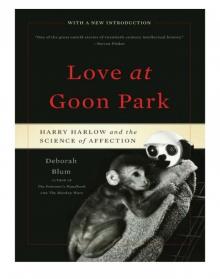 Love at Goon Park: Harry Harlow and the Science of Affection
Love at Goon Park: Harry Harlow and the Science of Affection The Poison Squad
The Poison Squad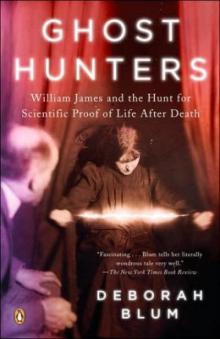 Ghost Hunters: The Victorians and the Hunt for Proof of Life After Death
Ghost Hunters: The Victorians and the Hunt for Proof of Life After Death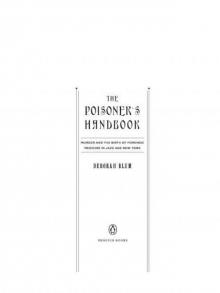 The Poisoner's Handbook
The Poisoner's Handbook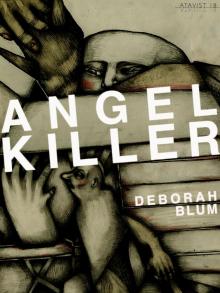 Angel Killer
Angel Killer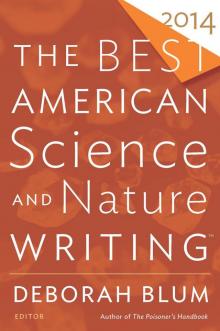 The Best American Science and Nature Writing 2014
The Best American Science and Nature Writing 2014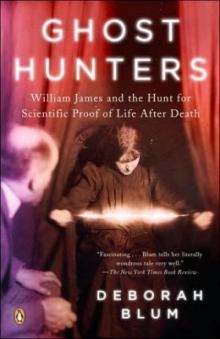 The Ghost Hunters
The Ghost Hunters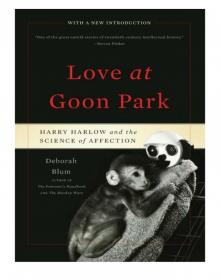 Love at Goon Park
Love at Goon Park